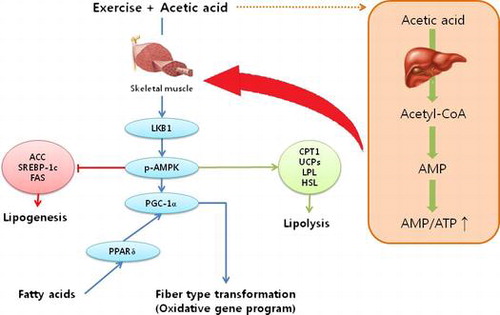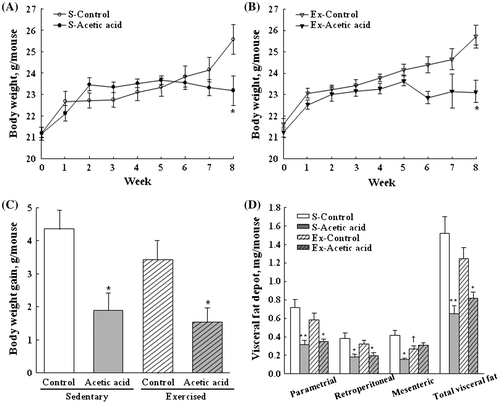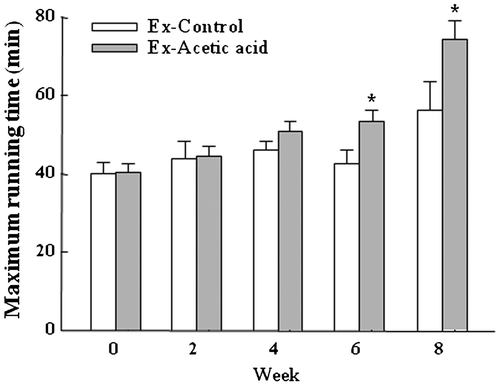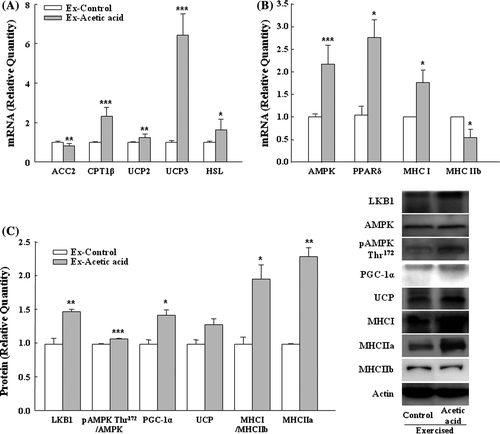Figures & data

Fig. 1. Effects of dietary acetic acid on body weight of sedentary and trained groups (A and B, respectively), body weight gain (C), and visceral fat depot (D) of exercise-trained mice.
Notes: Animals were subjected to the exercise training program for 8 weeks. Visceral fat depot includes epididymal, mesenteric, and retroperitoneal fat. Values represent mean ± SE (n = 6). *Significantly different from respective control (*p < 0.05, **p < 0.01). †S-control vs. Ex-Control (p < 0.05).

Fig. 2. Effects of dietary acetic acid on endurance running time.
Notes: Endurance capacity was evaluated with treadmill exercise every 2 weeks. Values represent mean ± SE (n = 6). *Significantly different from Ex-Control (p < 0.05).

Table 1. Serum parameters.
Fig. 3. Effects of dietary acetic acid on selected gene expressions for fat oxidation (A, B), and protein expressions (C) from soleus muscle of exercise-trained mice.
Notes: ACC2, acetyl CoA carboxylase; CPT1β, carnitine palmitoyltransferase 1 beta; UCP2, uncoupling protein 3; UCP3, uncoupling protein 3; HSL, hormone-sensitive lipase; AMPK, AMP-activated protein kinase; pAMPK, phosphorylated AMPK; PPARδ, peroxisome proliferator-activated receptor δ; MHC I, myosin heavy chain I; MHCIIa, myosin heavy chain IIa; MHC IIb, myosin heavy chain IIb; LKB1, Liver kinase B1; PGC-1α, Peroxisome proliferator-activated receptor gamma coactivator-1α. Relative quantities of each gene were presented in terms of 2–ΔΔCt, calculated using the ΔCt and ΔΔCt values. Values represent means ± SE (n = 3). *Significantly different from Ex-Control (*p < 0.05, **p < 0.01, ***p < 0.001).

